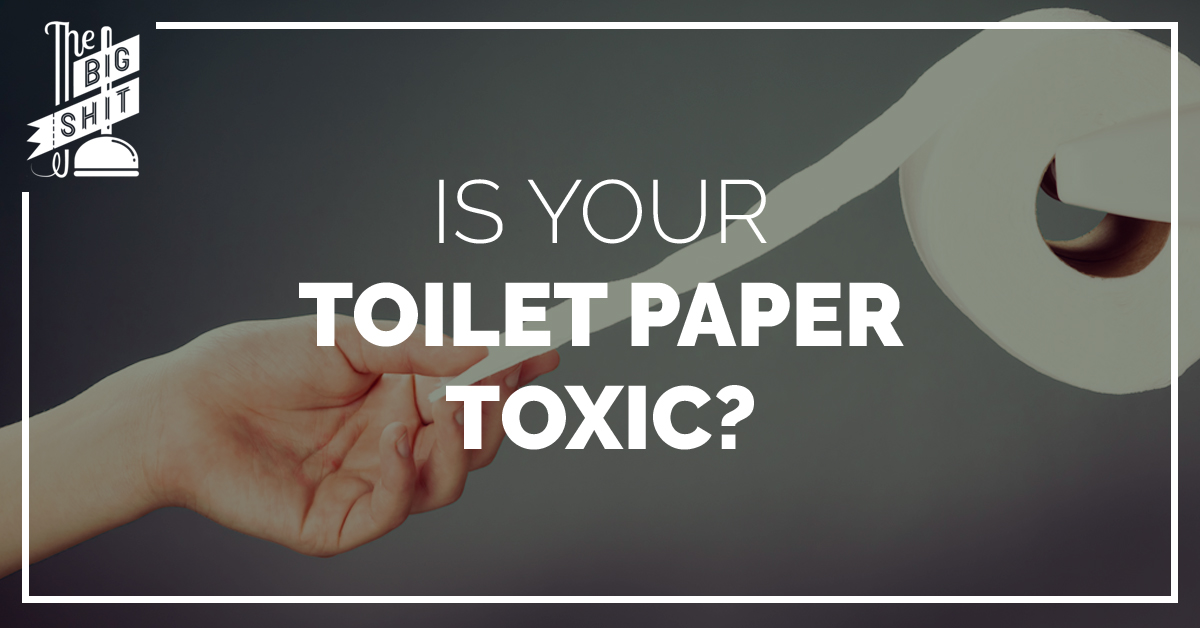
15 Jan Is Your Toilet Paper Toxic?
None of us give much thought regarding whether or not our toilet paper is harmful to our health. But the truth is, we absorb countless chemicals into our bodies every day – and not just from toilet paper. Many products we use on our faces and personal areas are bought with the idea that we’re limiting our risk of exposure. More often than not, it’s the opposite.
When shopping for toilet paper, most people reach for the soft white stuff. In reality, this is the worst possible choice. Toilet paper and other commercial paper products such as coffee filters, milk cartons, and baby wipes are produced with more than 100,000 different chemicals. The most hazardous of these is chlorine, and they are absorbed through the skin where they enter the bloodstream and can, over time and with constant use, lead to us getting sick.
Why Is White Toilet Paper So Toxic?
We all know that toilet paper is made from wood. Logically, then, we would expect the color to be brown. But it’s not. So why is it white instead?
The answer: paper companies use chlorine to bleach it. And bleached paper is one of the most carcinogenic products we can use on our nether regions!
The reason for this is that the chemicals react with the organic molecules in the wood in such a way that it forms toxic byproducts, such as dioxins and polychlorinated biphenyls (PCBs). Constant long-term exposure has been known to cause immune system problems, birth defects, hormone imbalances, cancers, and reduced fertility, among other issues. And bleached toilet paper contains high numbers of these compounds. The scary part is that the body can’t expel these byproducts, so they accumulate over time.
Besides chlorine, there are other chemicals present in white toilet paper that are known carcinogens. The presence of Bisphenol A (BPA) is often very concentrated in paper products, including toilet paper. And formaldehyde is used to improve the strength of toilet paper when it gets wet.
Safe Alternatives
Fortunately, there are other options that are much better for our health. Think of it as you would about checking the packaging on your food. Here are a few specific things to look for:
- BPA-free paper products. These haven’t been recycled and, as a result, have not been exposed to the bleaching process
- Beige or brown paper. This is how toilet paper looks without being bleached. It’s not very soft and isn’t always comfortable, but it’s a small price to pay for maintaining your health in the long run.
- PCF (Processed Chlorine-Free) or TCF (Totally Chlorine-Free). This paper has been recycled, but instead of bleach, the process is done with ozone, hydrogen peroxide, or oxygen.
- ECF (Elemental Chlorine-Free). This might sound like a good alternative, but this is actually a label to stay away from, as the paper may actually be more toxic than regular white toilet paper.
- Check out our friends from Who Gives a Crap too! They are saving trees and your bum!
Cloth Toilet Paper
This might sound a little peculiar, but when you think about it, it’s really no different than using a cloth diaper on a newborn baby. As long as it’s done correctly, this option is perfectly sanitary and a very safe alternative to bleached white paper. Using cloth toilet paper is:
- Healthier. Cloth toilet paper has never come into contact with all those chemicals used in the paper making process.
- More affordable. This option is extremely cheap, and the reusable clothes can be washed with the rest of your laundry.
- Eco-friendly. By not buying disposable toilet paper, you’re no longer contributing to the carbon footprint created by manufacturing it.
- Softer. This goes without saying. You’ll especially notice a difference if you’re wiping a lot when you’re sick.
- Cleaner. You’ll feel cleaner, and there are no leftover pieces of paper sticking to your body.
So the next time you go shopping for toilet paper, take a minute to check the packaging. Your keister will thank you.
